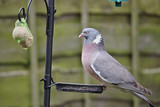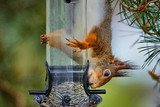What birds will we still see in the future?
Birds in the future. With global warming and climate change gaining pace, and increasing amounts of land being transformed into housing, bird species across the world are under threat. Over the coming years, bird populations will find it harder to survive and more species will disappear completely.
Take a look at some notable extinct birds, and species that are likely to disappear in the near future below.
Famous Extinct Birds
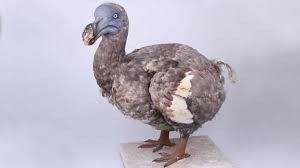
The dodo is probably the most famous of extinct birds. Found on the island of Mauritius, the dodo was a large, flightless bird, standing at a height of around 1m tall. We don’t know much about the dodo’s appearance as written accounts from the time vary, but it is thought to have had grey feathers, a bald head and yellow feet.
The dodo had no natural predators, so was naturally unafraid of humans who arrived on the island. This proved to be their downfall, as they were easily caught and killed for their meat. The last dodo sighting was in 1662, and they have been considered extinct ever since.
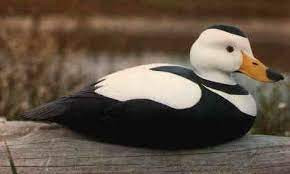
The labrador duck was a North American bird, last sighted in 1878. The labrador duck was a small, squat bird with a distinctive black and white colouring. It migrated annually but generally could be found in New Jersey and New England, on the east coast of the US.
It is not exactly known how the labrador duck became extinct, but it is thought to be due to declining mollusc populations, which was the bird’s primary food. Increased human activity around nesting sites is also thought to be one of the reasons for their demise.

The passenger pigeon was another US native bird which was last spotted in 1914. These birds were hunted widely by Native Americans as a cheap and easy source of food, and numbers declined as a result of this. The birds flew in huge flocks, making them an easy target for hunters, and their habitats were reduced due to deforestation. Martha, the last passenger pigeon, died at the Cincinnati Zoo in September 1914.

Laughing owls were endemic to New Zealand, and were also known as the ‘scoundrel owl’. The bird got its unusual names due to its maniacal call which was described as sounding like an accordion or peculiar, mischievous sounding shrieks. Their extinction was mainly caused by collectors looking for specimens to keep or add to their collections. The introduction of predators such as cats and stoats to New Zealand is also thought to be a contributing factor. The laughing owl was last reported in 1940, recognized by its peculiar call.
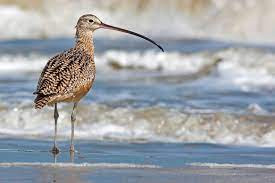
The eskimo curlew was, at one time, the most common shorebird in North America, but towards the end of the 19th century, up to two million of these birds were killed each year. The curlew has a long, moon shaped beak and long legs which suit its shore-based habitat. Hunting of the curlew was outlawed in 1916, but unfortunately, this wasn’t enough to protect the species, the last sighting of which was in 1981.
Endangered birds
Sadly, even today 1 in 8 bird species are endangered. The effects of climate change on birds, as well as the interaction of global warming and bird migration, are all putting a strain on bird species across the world. Here are a few species that we can expect to disappear over the coming years.
This mysterious species has not been spotted since 1998, making it critically endangered. There is thought to be fewer than 50 birds in the wild, and it has only been spotted 3 times in total. The owlet-nightjar is found on the island of New Caledonia, and it is thought that it favours humid forests. Little is known about this elusive bird, although we do know it is a relatively large bird with brown feathers and a yellow beak. Without conservation efforts, it will likely be extinct in the next five years.
The Sumatran ground cuckoo is a large, striking bird with distinctive green, lilac and blue colouring. It had not been spotted for over 90 years until an individual was trapped in 1997, and its call has only recently been recorded. There are only around 70 individual birds in the wild, and its population is thought to be decreasing even further due to habitats being destroyed for agriculture.
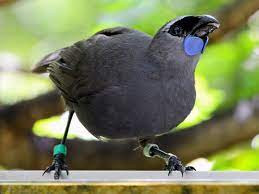
Birds in the future.
The kokako is found on New Zealand’s South Island, and it can be spotted thanks to its bright blue throat. The last sighting of this bird was in 2007, and it is unknown how many individuals remain - if any. Pests introduced to the South Island, such as rats and possum eat young and eggs, and much of the South Island’s natural forest has been cleared for agriculture, contributing to the decline of this wonderful bird. It’s likely that this bird will be completely extinct in the next couple of years.

This bird is a large, dark member of the cuckoo family. It survives only in three small, fragmented forests on the island of Mindoro in the Philippines, feeding on large insects and preferring to make it’s home in large patches of tangle vines. The coucal is suffering a decline in numbers due to local logging and mining activities, which are destroying its natural habitat and removing sources of food. It is likely that the coucal will be extinct within the next ten years.
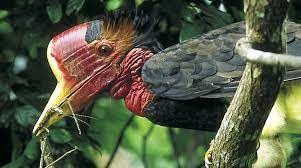
Birds in the future.
The distinctive helmeted hornbill is critically endangered as of 2015. This large and unusual looking bird can be identified from the bony protrusion on top of its beak, which is prized locally for ornamental purposes, as well as being used in traditional medicine. This hunting has added to their decline, along with a loss of habitat due to logging and wood plantations. Without conservation efforts, the helmeted hornbill may be extinct by 2030.
Although for many of these birds, it is simply too late to protect them from extinction, it’s easy to support your local garden birds. By making sure there is a plentiful supply of bird food, such as mealworms, a source of water and safety from predators such as cats, you can help the birds in your garden to thrive for years to come.
Explore Popular Articles
-
8 Easy Ways to Attract Woodpeckers to Your Garden
8th Apr 2024Woodpeckers are among the most interesting birds known for their drumming sound and bright colours.
-
How to Protect Your Bird Feeders from Pigeons ?
28th Mar 2024You must have noticed damaged feeding ports, hanging mechanisms, perches, lids and bottoms. Who coul
-
5 Foolproof Ways to Rat-Proof Your Bird Feeder
18th Mar 2024Building a bird-friendly environment is a delightful endeavour, but it involves the responsibility o




